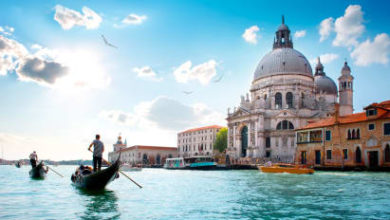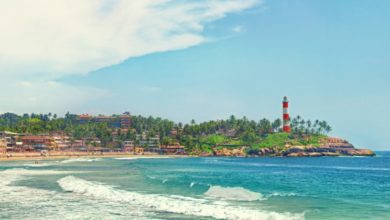The cultural capital of Europe Vienna highly Romantic past as a pivotal point of the erstwhile German Empire

Vienna is commonly called the cultural capital of Europe with an imperial air about it. It boasts of a highly romantic past as a pivotal point of the erstwhile German Empire. This was also the favourite haunt of some of the greatest artists and influential thinkers of the last three centuries like Beethoven, Mozart and Sigmund Freud.
The city is located on the banks of the river Danube. Climate is generally moderate and mild, with summer temperatures in the range of 20-30 degrees and winter temperature at 0 degrees. Along with having a long history, this capital of Austria also has all the amenities becoming of a modern cosmopolitan city.

History
The history of Vienna is inseparable with the rise of the Habsburg Empire in the Middle Ages. It is marked with the election of the Swiss count Rudolf Habsburg as the German Emperor in 1273.
The election was in the hands of kurfuersts, a group of counts. The counts elected the then powerless Habsburg in the hope of losing as little of their power as possible. However Habsburg proved them wrong and defeated the then Emperor of Bohemia, a mighty opponent. This made him the unchallenged emperor of Germany and also brought the lands of Austria under his power. Soon Hofburg of Vienna became his residence and headquarters. Vienna continued being the capital of the empire till its very end. Though the Habsburg Empire lost temporarily to Luxemburg dynasty in 14th century, they were largely successful throughout the 15th and 16th centuries. By the 16th century they were lords of an empire in which the sun never sets.
The Habsburg emperors strove to perpetuate the glory of their dynasty by magnificent buildings many of which still adorn Vienna.
Sightseeing

The Anchor Clock, or Ankeruhr as it is locally called, is made in a typically modern art style. It was built between 1911 and 1917 and is placed on the oldest square of the city. It displays twelve historical figures in the course of 12 hours of a day and at noon, all figures from various eras parade together.

The Belvedere grounds house two magnificent palaces built for Prince Eugene of Savoy. The buildings’ architecture and interiors are done in the Rococo style. Both palaces today are used as museums for Austrian paintings. Some of the important artists showcased here include Gustav Klimt, Egon Schiele and Oskar Kokoschka.

Burg Theater or National Theatre is also known as Burg or Haus am Ring. It is placed in Vienna’s first district. The beginnings of this theatre were in 1741 when Empress Maria Theresia handed over an unused dance floor to a theatre group called Sellier. The company started using a nearby building in 1888 and this has been the theatre house since then. The beautiful façade is decorated with statues of famous literary figures like Goethe and Schiller. The Burg Theater is the venue for some of the greatest cultural events in Vienna.

The Danube Tower offers a great view of Vienna. It is 352 meters tall. The tower houses a rotating restaurant where you can enjoy traditional Viennese fare while enjoying the terrific view. The tower also has avenues for bungee jumping for the more adventure oriented. Uno City, the UN headquarters, is also nearby.

Haas House opposite St Stephen’s cathedral is a good place to enjoy a spectacular view of the cathedral.

Hofburg, Vienna`s Imperial Palace, was originally made in the medieval times. Over time the extensions started being built in other architectural styles from gothic to modern art. It now hosts the National Library, Imperial Treasury and the Spanish Riding School. The chapel at the palace still retains the medieval style. It would be a good idea to attend the Sunday Mass at the chapel as it gives you an opportunity to listen to the much celebrated Boy’s Choir of Vienna.

The Heldenplatz, or Square of Heroes next to the Palace has statues of some of Vienna’s war heroes and is an important symbol of the country’s identity. The church construction was started in 1715, to honor the vows of Emperor Karl VI he took at the time of a plague epidemic. The front portion of the cathedral was redesigned by Henry Moore in the 1970s.

The Naschmarkt dates back to the 16th century. It is situated atop the roof of Wienfluss, another river in Vienna. It offers a unique blend of local traditions and oriental influences. It is a good shopping area and also houses many coffee houses and restaurants.

The four kilometer long Ring Boulevard circles the heart of the city and offers views of some of the most important buildings of Vienna like Hofburg, State Opera House and the Museum of Fine Arts, all constructed in different styles.

The Prater is a highly popular fun fair, conveniently located close to the city centre. It is great for walking, cycling and jogging. There are facilities for sports and recreation. Other important attractions include the Giant Ferris Wheel and the Lilliputian Railroad.

The Spanish Riding School, founded in 1572, is very interesting for its practice of classic dressage. It is the oldest and last riding school where this practice still continues. The horses at the school are bread in Lipizza in Slovenia. The Riders here train the horses and perform during winters at the Vienna Imperial Palace. The elegant and sophisticated performances offer unparalleled pleasure to the spectators of this expensive show.

Stephansdom or St. Stephen`s Cathedral is one of Vienna’s most famous sights. This cathedral, built in 1147 has been a central landmark of the city. The huge roof and the tall tower make impressive sights. There are several myths, interwoven with romance and miracles, surrounding this centuries old building.

The Vienna Opera House is one of the finest with a world-wide reputation for excellent opera performances. It is built in Italian Renaissance style, an era marked in history for its great contributions to music and art. It is also famously associated with the Vienna Philharmonic Orchestra. A night at the Opera House is a must for any visitor to the culture capital.
Getting There
There are several budget airlines plying to Vienna’s Wien Schwechat airport. You can also fly to a nearby city like Linz, Graz or Brno and take a train or bus to Vienna. The city centre is 16 minutes by the City Airport Train.
Vienna is an important hub of railroads in Europe, so you can take overnight trains from Berlin or Venice. From Prague, Vienna is just a little less than five hours.
The capital is also connected by highways to other Austrian cities. However the speed limit of 130 km per hour on highways, 50 km per hour in town areas has to be strictly observed. However parking in Vienna can be expensive and if you are planning to take your car to the city it would be good to book with a hotel that offers parking. Buses are definitely cheaper means to reach Vienna.
Getting Around
Vienna has excellent facilities for public transport. There are railroads, the tube, trams and buses. A single trip ticket costs EUR 1.50 and a 24-hour ticket costs EUR 5 currently. If you are planning a few days’ stay and some sightseeing, you would do well to go for the Vienna Card, which costs EUR 16.50 and is valid for 72 hours of unlimited public transport within the city. The card also entitles you to some discounts at some attractions and shops.
There is also a reliable network of night buses where you can use regular tickets.




